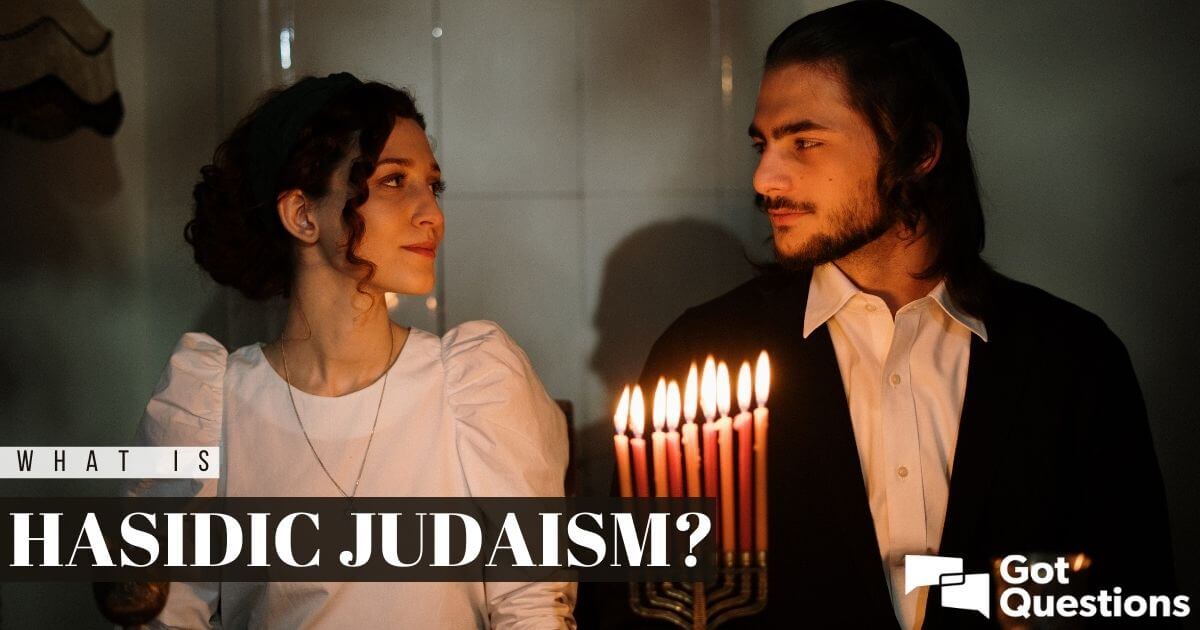What's The Difference Between Hasidic And Orthodox Jews?
Understanding the distinctions between Hasidic and Orthodox Jews is essential for anyone exploring the rich tapestry of Jewish culture and traditions. Both groups share a deep commitment to Jewish law and customs, yet they differ significantly in their practices, beliefs, and cultural expressions. This article aims to provide clarity on these differences while highlighting the unique characteristics that define each group.
As we delve into this topic, it becomes clear that the distinctions go beyond mere religious practices. The Hasidic and Orthodox Jewish communities have distinct historical backgrounds, social structures, and ways of life that set them apart. By examining these elements, we can gain a deeper appreciation of their respective contributions to Jewish heritage.
This exploration will also touch on the cultural and spiritual dimensions that shape the identity of these communities. Whether you're a student of religion, a cultural enthusiast, or simply curious about the Jewish faith, this article will provide valuable insights into the nuances of Hasidic and Orthodox Judaism.
Read also:Jensen Huangs Daughter A Glimpse Into The Life Of A Tech Moguls Family
Table of Contents
- History and Origins
- Core Beliefs and Philosophy
- Religious Practices and Traditions
- Community Structure and Lifestyle
- Cultural Expressions and Art
- Education and Learning
- Key Differences Between Hasidic and Orthodox Jews
- Statistics and Demographics
- Modern Challenges and Adaptations
- Conclusion and Final Thoughts
History and Origins
The origins of Hasidic and Orthodox Judaism can be traced back to different periods in Jewish history. Hasidic Judaism emerged in the 18th century as a spiritual revival movement in Eastern Europe, initiated by Rabbi Israel Baal Shem Tov. This movement emphasized personal devotion, joy, and a mystical connection to God. On the other hand, Orthodox Judaism, which includes both Modern Orthodox and Haredi (Ultra-Orthodox) streams, has its roots in the traditional interpretation of Jewish law and customs that have been preserved over centuries.
Hasidism quickly gained followers due to its emphasis on accessibility and emotional engagement with religion. It offered a more personal and spiritual approach to Judaism, appealing to those who felt disconnected from the more formalistic practices of the time. Meanwhile, Orthodox Judaism maintained a focus on strict adherence to halacha (Jewish law) and the preservation of traditional Jewish customs.
Historical Context of Hasidism
Hasidism arose during a time of great social and economic upheaval in Eastern Europe. The movement sought to address the spiritual needs of the Jewish masses, providing them with a sense of community and purpose. Key figures such as the Baal Shem Tov and his disciples played a pivotal role in spreading Hasidic teachings across the region.
Core Beliefs and Philosophy
At the heart of both Hasidic and Orthodox Judaism lies a shared commitment to the principles of Jewish faith. However, their approaches to these principles differ significantly. Hasidic Jews emphasize the importance of joy, faith, and a direct relationship with God, often referred to as devekut (cleaving to God). This mystical approach is complemented by a strong emphasis on community and communal prayer.
In contrast, Orthodox Jews focus on the meticulous observance of halacha, which governs every aspect of daily life. This includes dietary laws, Sabbath observance, and family purity laws. While both groups value tradition and religious observance, the Hasidic approach tends to prioritize the spiritual and emotional aspects of faith, whereas the Orthodox approach places greater emphasis on legalistic adherence.
Variations in Theological Perspectives
- Hasidic Jews often incorporate elements of Kabbalistic mysticism into their practices.
- Orthodox Jews prioritize the study of Talmud and other rabbinic texts as a central component of religious life.
- Both groups believe in the importance of Torah study, but the methods and emphases may differ.
Religious Practices and Traditions
The religious practices of Hasidic and Orthodox Jews reflect their distinct philosophies and priorities. Hasidic Jews are known for their vibrant and joyful prayer services, often accompanied by singing and dancing. These services are led by a Rebbe, a spiritual leader who serves as a guide and mentor to the community. In contrast, Orthodox prayer services tend to be more formal and structured, with a focus on reciting prayers in accordance with established liturgical traditions.
Read also:Understanding Obituaries A Comprehensive Guide To Honoring Lives
Both groups observe the Sabbath and Jewish holidays with great devotion, but the ways in which they do so may vary. For example, Hasidic Jews may place a greater emphasis on communal gatherings and festive meals, while Orthodox Jews may prioritize individual study and prayer during these occasions.
Distinctive Rituals and Customs
Hasidic Jews often participate in unique rituals, such as the tisch (Rebbe's table), where followers gather to hear teachings and share a meal. These gatherings serve as a means of strengthening community bonds and deepening spiritual connections. Orthodox Jews, meanwhile, may engage in more traditional forms of worship, such as attending synagogue services and participating in communal study sessions.
Community Structure and Lifestyle
The structure of Hasidic and Orthodox communities reflects their respective philosophies and practices. Hasidic communities are typically organized around a Rebbe, who serves as the spiritual and sometimes political leader of the group. These communities often live in close-knit neighborhoods, fostering a strong sense of identity and belonging. In contrast, Orthodox communities may be more geographically dispersed, with members participating in a variety of synagogues and educational institutions.
Both groups place a high value on family life and education, but the specific ways in which they implement these values may differ. For example, Hasidic families often send their children to yeshivas (religious schools) that emphasize Hasidic teachings and traditions, while Orthodox families may choose schools that offer a broader curriculum, including secular subjects.
Community Dynamics and Social Structures
- Hasidic communities often maintain a hierarchical structure, with the Rebbe at the top.
- Orthodox communities may be more egalitarian, with leadership roles distributed among rabbis and community members.
- Both groups emphasize the importance of community support and mutual aid.
Cultural Expressions and Art
The cultural expressions of Hasidic and Orthodox Jews reflect their distinct identities and values. Hasidic art and music often incorporate elements of joy and spirituality, reflecting the movement's emphasis on devekut. This can be seen in the vibrant colors and dynamic compositions of Hasidic paintings, as well as the lively melodies of Hasidic niggunim (wordless melodies). Orthodox art and music, on the other hand, tend to be more formal and traditional, often adhering to established styles and conventions.
Both groups also contribute to the broader Jewish cultural landscape through literature, film, and other forms of artistic expression. These works often explore themes of faith, identity, and community, offering insights into the lived experiences of Hasidic and Orthodox Jews.
Artistic Traditions and Innovations
Hasidic art often features depictions of religious life and community gatherings, while Orthodox art may focus on historical and biblical themes. Both traditions continue to evolve, with contemporary artists incorporating new techniques and perspectives into their work.
Education and Learning
Education plays a central role in both Hasidic and Orthodox Jewish communities. Hasidic education emphasizes the study of Hasidic texts and the teachings of the Rebbe, while Orthodox education places a strong emphasis on the study of Talmud and other rabbinic literature. Both approaches aim to instill a deep understanding of Jewish law and tradition, while also fostering critical thinking and intellectual curiosity.
In recent years, there has been a growing emphasis on integrating secular subjects into the curriculum of Orthodox schools, reflecting a broader trend toward balancing religious and secular education. Hasidic schools, however, tend to focus more exclusively on religious studies, reflecting their commitment to preserving the unique traditions and values of the Hasidic movement.
Educational Institutions and Curricula
Hasidic yeshivas and Orthodox day schools offer students a comprehensive education in Jewish law, history, and culture, while also preparing them for life in the modern world. These institutions play a crucial role in shaping the next generation of Hasidic and Orthodox Jews.
Key Differences Between Hasidic and Orthodox Jews
While both Hasidic and Orthodox Jews share a commitment to Jewish law and tradition, there are several key differences between the two groups. These differences can be seen in their approaches to religious practice, community structure, and cultural expression. Understanding these distinctions is essential for anyone seeking to gain a deeper appreciation of the diversity within the Jewish faith.
Some of the most notable differences include:
- Emphasis on spiritual joy vs. strict adherence to halacha.
- Role of the Rebbe in Hasidic communities vs. more decentralized leadership in Orthodox communities.
- Different educational priorities and curricula.
Comparative Analysis
By examining these differences, we can better understand the unique contributions of each group to Jewish culture and tradition. Both Hasidic and Orthodox Jews have much to offer in terms of spiritual insight, intellectual rigor, and cultural richness.
Statistics and Demographics
According to recent studies, the global Jewish population is estimated to be around 14.7 million, with significant populations in Israel, the United States, and other countries. Within this population, Hasidic and Orthodox Jews represent distinct demographic groups, each with its own characteristics and trends.
Data from the Pew Research Center and other sources indicate that Hasidic Jews tend to have larger families and higher birth rates compared to other Jewish groups. This trend is partly due to the emphasis on family life and community in Hasidic culture. Orthodox Jews, meanwhile, may have slightly smaller families but still maintain a strong commitment to religious observance and education.
Demographic Trends and Projections
As the Jewish population continues to grow and evolve, the distinctions between Hasidic and Orthodox Jews are likely to become even more pronounced. Understanding these trends is essential for anyone seeking to engage with the Jewish community in meaningful ways.
Modern Challenges and Adaptations
Like all religious communities, Hasidic and Orthodox Jews face a variety of modern challenges and adaptations. These challenges include navigating the complexities of modern technology, addressing social and economic inequalities, and maintaining their distinct cultural identities in an increasingly globalized world.
Despite these challenges, both groups have shown remarkable resilience and adaptability. Hasidic Jews, for example, have embraced new technologies to enhance their religious practices and community outreach efforts. Orthodox Jews, meanwhile, have sought to balance traditional values with contemporary concerns, such as environmental sustainability and social justice.
Responding to Contemporary Issues
By addressing these challenges head-on, Hasidic and Orthodox Jews continue to thrive and contribute to the broader Jewish community and society at large.
Conclusion and Final Thoughts
In conclusion, the differences between Hasidic and Orthodox Jews reflect the rich diversity within the Jewish faith. While both groups share a deep commitment to Jewish law and tradition, their distinct approaches to religious practice, community structure, and cultural expression offer valuable insights into the complexities of Jewish identity.
We invite you to share your thoughts and questions in the comments section below. By engaging in meaningful dialogue, we can deepen our understanding of these fascinating communities and their contributions to the world. For further reading, consider exploring related articles on our site, where you'll find a wealth of information on Jewish history, culture, and spirituality.


